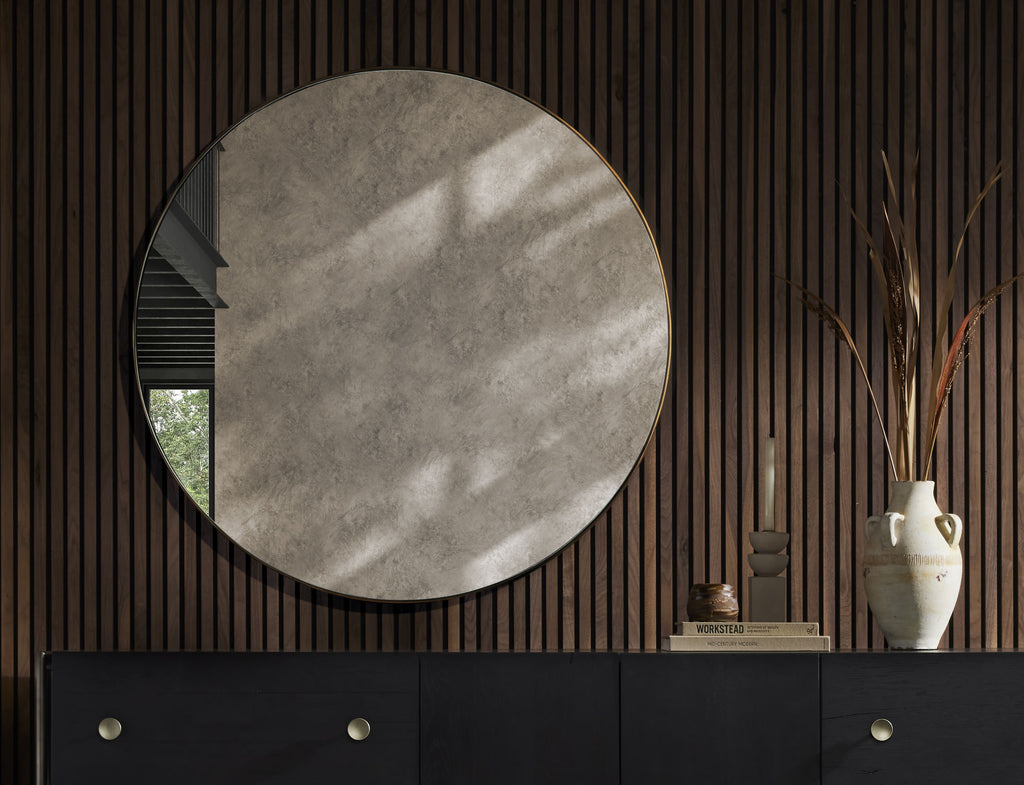How to Make a Small Room Seem Larger: 10 Tips and Tricks

Small spaces can feel cosy and intimate, but they can also feel cramped and uncomfortable. Whether you're dealing with a tiny bedroom, a compact living room, or a petite studio apartment, there are plenty of ways to make a small room seem larger. Here are 10 tips and tricks from our stylists for maximizing your space and creating the illusion of more square footage.
1. Declutter and Organize
The first step in making any space feel larger is to declutter and organise. Get rid of anything you don't need or use, and find a place for everything else. Use baskets, shelves, and other storage solutions to keep your space tidy and free of clutter.
2. Choose the Right Colours
When it comes to making a small room seem larger, colour is key. Light, neutral colours like white, beige, and grey can help reflect light and make a space feel more open and airy. Avoid dark, bold colours that can make a space feel smaller and more enclosed.
3. Use Mirrors
Mirrors are a powerful tool for creating the illusion of more space. Hang a large mirror on the wall, or create a gallery wall of smaller mirrors. This will help reflect light and make your space feel more open and inviting.
4. Invest in Multi-Functional Furniture
When you're working with a small space, every inch counts. Invest in furniture that can serve multiple purposes, like a sofa bed, a storage ottoman, or a coffee table with built-in storage.
5. Maximize Vertical Space
Don't forget about the vertical space in your room! Use tall bookshelves, floating shelves, or wall-mounted cabinets to create more storage without taking up valuable floor space.
6. Choose the Right Lighting
Good lighting can make a big difference in how a space feels. Make sure your room has plenty of natural light, and use a mix of overhead lighting, floor lamps, and table lamps to create a warm, inviting atmosphere.
7. Hang Curtains High
To create the illusion of taller ceilings, hang your curtains as high as possible. This will draw the eye up and make your space feel more open and spacious.
8. Use Rugs to Define Spaces
In an open-concept living area, use rugs to define different zones and create a sense of separation between spaces. This will help prevent your space from feeling cluttered and overwhelming.
9. Embrace Minimalism
Less is often more when it comes to making a small room seem larger. Embrace a minimalist aesthetic, and focus on a few well-chosen pieces rather than lots of small knick-knacks and decorative items.
10. Experiment with Scale
Finally, don't be afraid to experiment with scale. Sometimes, a large statement piece can actually make a small space feel more open and inviting. Just be sure to balance larger pieces with smaller, more delicate accents.
Conclusion
With these 10 tips and tricks, you can transform even the smallest of spaces into a cosy, inviting retreat. Remember to declutter and organise, choose the right colours, use mirrors, invest in multi-functional furniture, maximize vertical space, choose the right lighting, hang curtains high, use rugs to define spaces, embrace minimalism, and experiment with scale. By following these guidelines, you'll create a ln, and more welcoming space.
FAQs
Q1. Can I use dark colours in a small room?
While it's generally best to stick with light, neutral colours in a small room, you can certainly use darker colours if you're careful. Darker colours can make a space feel cosy and intimate, but they can also make a space feel smaller and more enclosed. If you want to use a darker colour, try using it on an accent wall or in smaller doses, and pair it with plenty of light-coloured accents to balance it out.
Q2. How can I create the illusion of taller ceilings?
One easy way to create the illusion of taller ceilings is to hang your curtains as high as possible. This will draw the eye up and make your space feel more open and spacious. You can also try using vertical stripes or incorporating tall bookshelves or floor lamps to create a sense of height in your space.
Q3. Can I use large furniture in a small room?
Yes, you can use large furniture in a small room as long as you're strategic about it. Instead of filling your space with lots of small pieces, choose a few larger statement pieces that will anchor your space and make it feel more intentional. Just be sure to balance larger pieces with smaller, more delicate accents to prevent your space from feeling overwhelming.
Q4. How can I make a small bedroom feel larger?
In addition to the tips we've already covered, there are a few specific strategies you can use to make a small bedroom feel larger. One is to choose a platform bed with built-in storage to maximize your space. Another is to use a floating shelf or bookshelf as a bedside table to save floor space. And finally, consider using a large mirror on one wall to reflect light and create the illusion of more space.
Q5. How can I incorporate colour into a small space?
If you want to incorporate colour into a small space, there are a few key strategies to keep in mind. First, stick with light, neutral colours as your base, and use pops of colour sparingly. You can also try using colour in unexpected ways, like painting the ceiling or using colourful artwork or accessories. Just be sure to balance bold colours with plenty of white or light-coloured accents to keep your space feeling open and airy.
In conclusion, making a small room seem larger is all about being intentional and strategic with your design choices. By following these 10 tips and tricks, you can create a space that feels open, welcoming, and inviting, no matter how small it may be. So don't be afraid to experiment, embrace minimalism, and make the most of every inch of your space. With a little creativity and a lot of planning, you can transform even the tiniest of rooms into a beautiful and functional space that you'll love spending time in.

